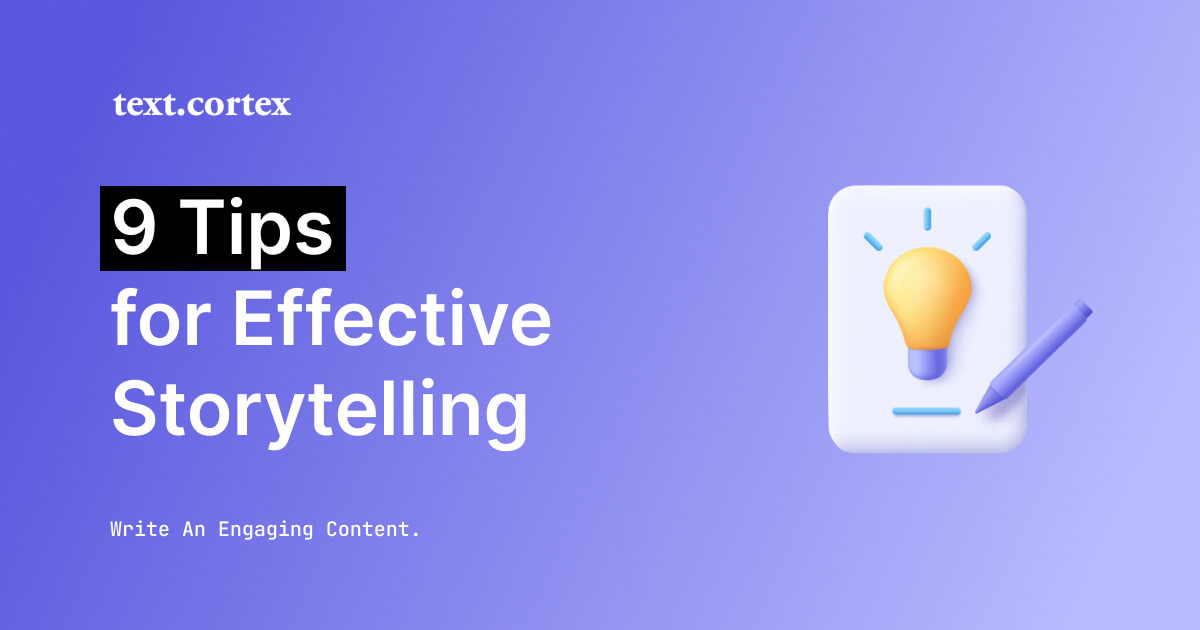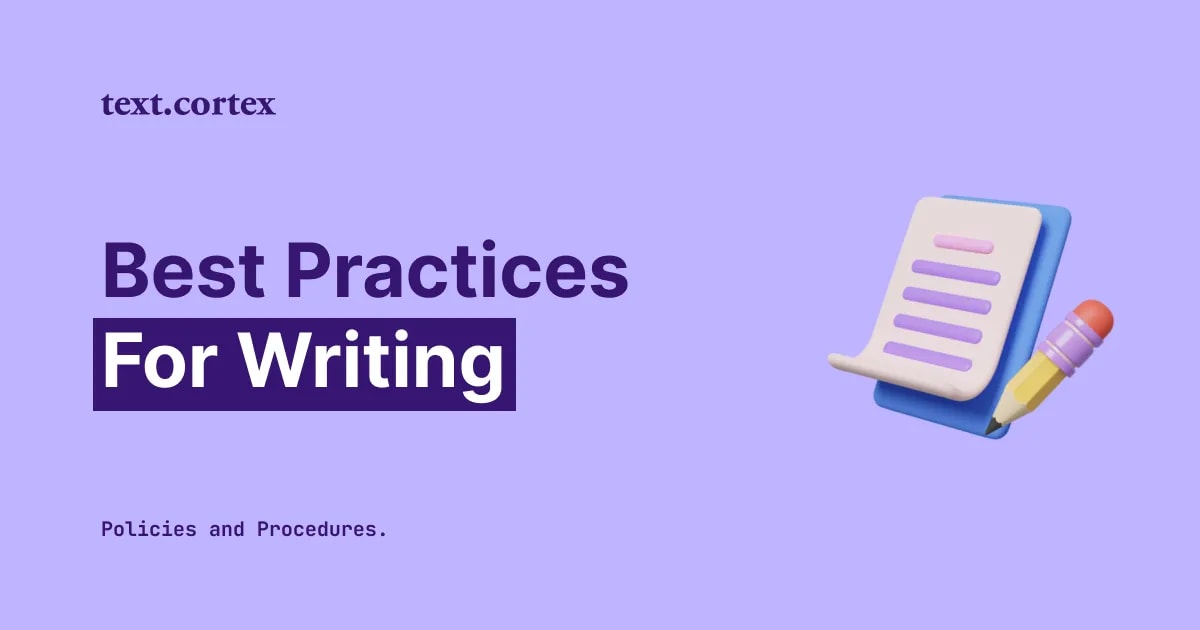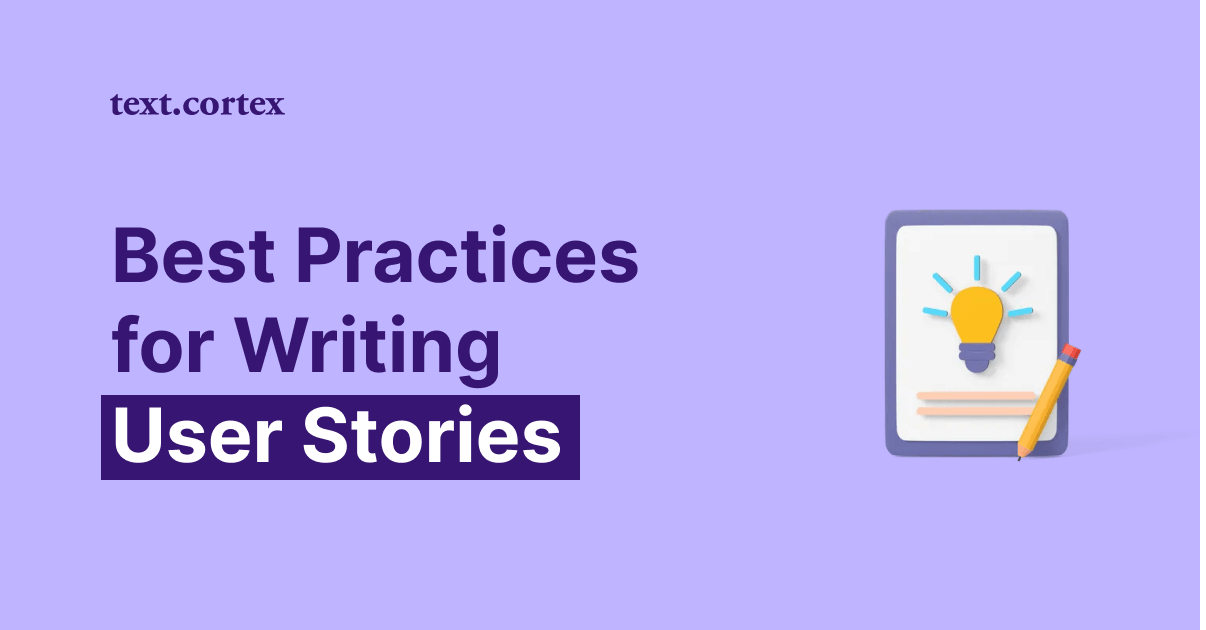You use storytelling to persuade, engage, and inform your audience.
Yet, due to people's attention span decreasing, you can struggle with writing engaging content for your target audience.
Studies say we have average attention of 8 sec, like a goldfish memory.
That’s why boring content leads to readers leaving after the introduction or forgetting about your story in minutes.
If you want to spice up your content, we offer 9 tips for effective storytelling that will help you please your readers' needs.
After reading this article, you will get a clearer vision of effective storytelling and how to practice it, which will lead to more views and sales.
Let’s check it out!
What is effective storytelling?
Believe it or not, the answer is storytelling.
Storytelling is a way of communicating information to people.
Good storytelling is tailoring your message to each reader.
With a good story, you form a sense of community with the audience.
Effective storytelling is not just a way of sharing information with the reader.
Instead, it is building trust with your audience and influencing them with information and empathy.
The good thing is that you can learn effective storytelling through practice and a few tips.
Let's go through these tips to see how they will impact your writing.
9 Tips for effective storytelling & how to practice it
Below, you can find the tips you should keep in mind when creating content.
Following these 9 tips, you will bring your story closer to the readers, and they will read it with eagerness and ease.

1. Understand the Problem.
One of the key tips for writing engaging content is having a clear vision of what you are writing.
You don't need to be an expert on the topic, but you need to do research.
To understand the problem, you don't need to have a personal experience with it.
It is enough to research, find multiple points of view, and offer potential solutions.
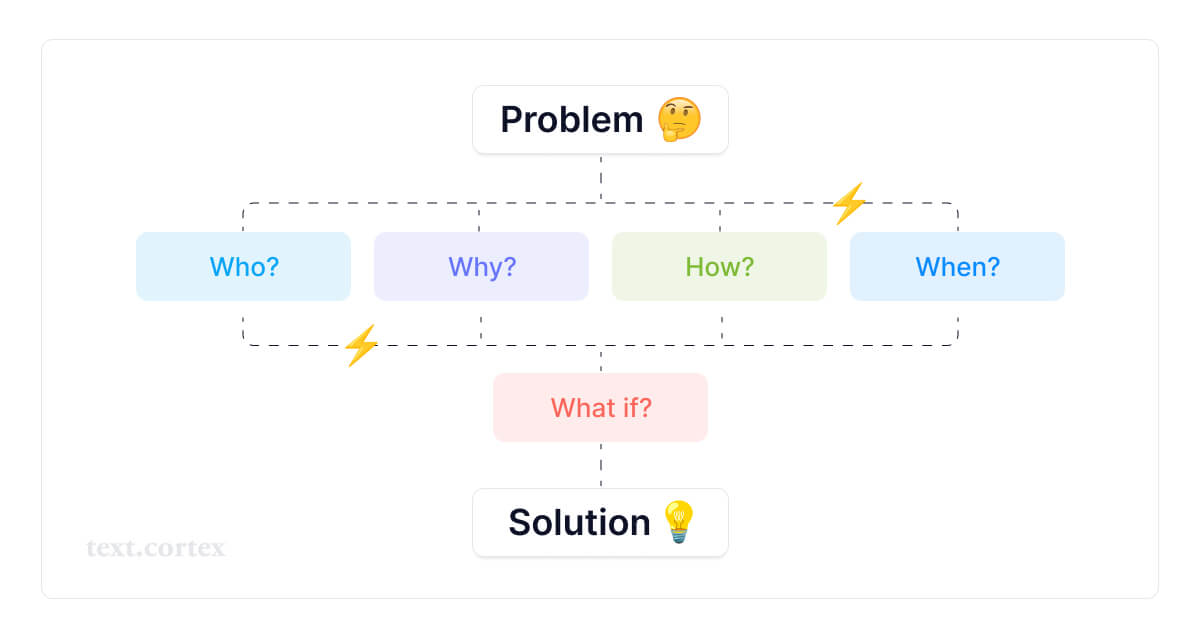
Then, even if you don't have any solutions, you can tell them where to look for them.
If your audience feels like you don't know what you are talking about or you don't share their problems and needs, they will move on from your content.
You should show them that you understand the problem/ need by describing it in detail, showing facts, images, graphs, etc.
It is not easy to convince your audience that you have some valuable information for them.
Yet, if they see the steps you took or someone they relate to, your audience will be more convinced.
2. Keep it simple.
Keeping it simple means using language that everyone understands when they read it for the first time.
Keeping it simple also means avoiding terminology that your readers don't know or don't use.
You should try to get to the point as soon as possible with straightforward sentences.
Your reader wants to understand what they have read and feel like you are talking directly to them.
If you use long sentences or phrases that your reader is unfamiliar with, they will move on from your content.
Keeping it simple is also connected to knowing your audience and what words they know/use.
If you are writing for an audience familiar with certain terms, you should use them because they will feel like you know what you are talking about.
For example, if you write about a medical issue that a broader audience will read, you should avoid medical terms.
Yet, if you are writing for a more narrow audience, such as doctors in a certain field, then you should use appropriate terms.
3. Share proof/facts.
If you want to convince your audience that you know what you are talking about, you need to share some proof/facts.
It can be in the form of a description, image, graphs, link to research, diverse examples, etc.
Here’s the average time users spend on pages based on the number of words on that page:
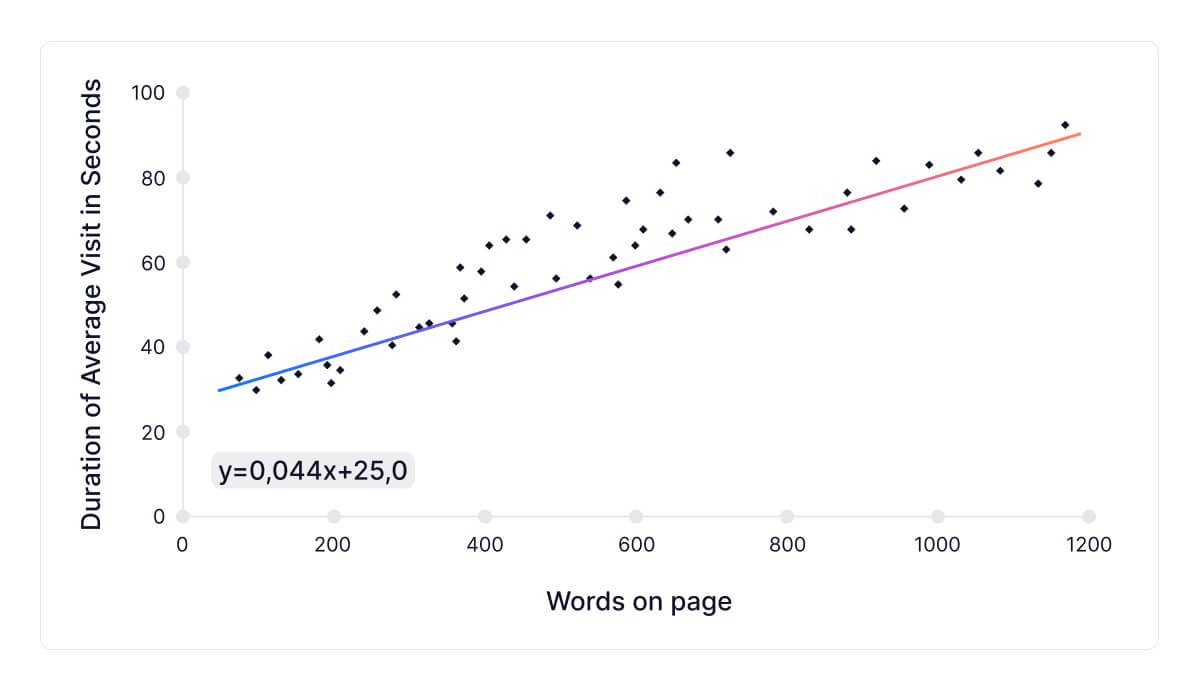
Don't overdo it in the sense that most of your content is sharing proof/facts.
You still need to tell a story from start to finish, and facts should only help your story be more credible.
Sharing proof is an effective way of storytelling because it adds credibility and builds trust with your readers.
You can use facts to visualize the steps that led to a particular result.
Also, you can use social proof to empathize with your audience.
4. Add a personal note.
A personal note is your experience/point of you that will tighten your connection to your audience.
To make your story more credible and show empathy, you need to convince your readers that share the same views or problems.
If you have an interesting story connected to the topic, share it. Tell them how you solved it if you had the same problem as your reader.
If you are an expert on the topic you are writing about, tell it and prove it. By adding a personal note, you make your story more authentic and relatable.
Avoid making your story all about you without any useful content for the readers.
Instead, find a way to incorporate your experience with the story, to make the reader feel like they are heard.
Avoid fluff when telling your story, and get straight to the point with it.
For example, if you are writing about a topic related to cars, you should share your experience with your car.
Yet, that experience should be relative proof that it will only tighten your relationship with your audience.
You should not turn it into a monologue that your audience will skip or get bored reading.
5. Don't deceive your audience.
If you want to build a good relationship with your audience, don't promise them something that won't happen.
Instead, you need to be straightforward and tell your audience exactly what they will get from you.
For example, if you promised that your article would have five solutions to a problem, you need to give them those five solutions.
If a reader doesn't get what he thought he would get, you will lose them immediately.
Don't over-promise or set unrealistic expectations.
Your audience will think you didn't understand the problem, and they will leave.
It is good practice to tell your audience in the beginning what they can expect by reading your content.
You will win over the target audience that came for your offer by doing this.
You will lose the readers that didn't come for that offer, but that is not your target audience.
Now you know how to make your stories more effective and user-friendly.
If you are unsure how to practice your storytelling skills, we have four more tips below.
6. First read then write.
We have already mentioned that good research is key for effective storytelling.
Before starting to write, you should make sure you have enough information in your head.
Then, if you can't remember something or you are not sure, go back to research.
Research is key to good writing if you want to avoid repetitiveness and useless information.
Not enough relevant information for your audience won't make your content more engaging.
If you want to research like a pro, you should:
- Read at least ten sources
- Make a draft with all of the information
- Highlight the most important information
- Find out the most frequently asked questions about the topic
- Find out what people google about the topic
- Find out who your target audience is
- Find out what phrases your target audience uses
If you do your research properly, your writing will come much easier for you, and it will turn out more user-friendly.
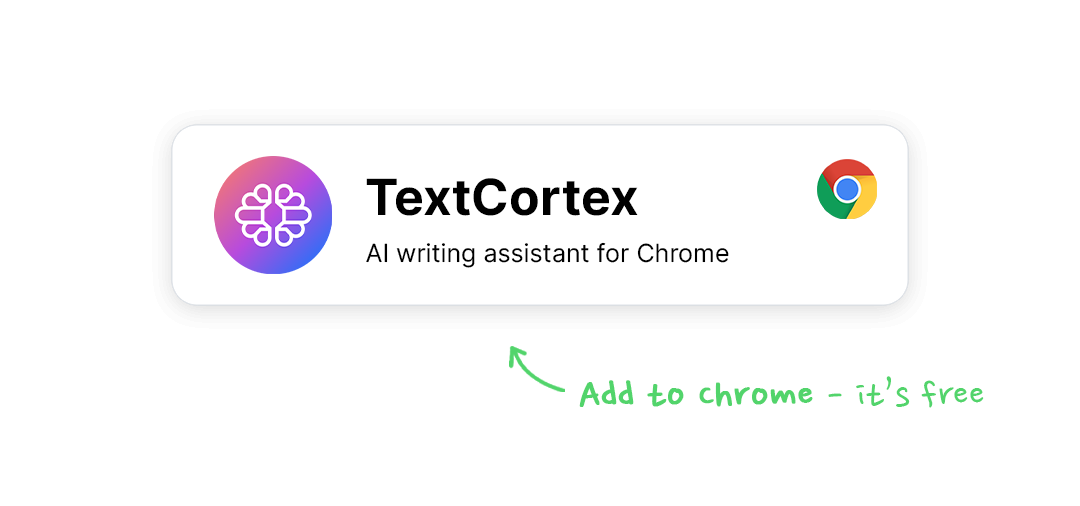
This will lead to more users subscribing to your list and buying your product/service.
7. Check your story at least two times.
Your first draft can seem perfect until you read it again.
The best time to edit your first draft is the day after you have written it.
When you want to edit your first draft, you should try this:
- Cut out any unnecessary words
- Simplify phrases and sentences
- See if there are enough facts that prove your statements
Your original story should change a couple of times until it loses all the unnecessary details that will drive the readers away.
8. Switch to the reader's point of view.
When creating content for an audience, you need to put yourself in their shoes.
Try to be as objective as possible when writing and editing.
Many times, writers write about what they think the audience would like to hear, not what the audience needs to hear.
This is why doing in-depth research about your audience, and the topic is important if you want to switch perspectives.
Here’s how to switch your point of view:
- Think about your audiences' problems/needs
- Think about the questions they might have
- Ask yourself how this piece of information is relevant to your audience
Relevant information should either give some new insight to your audience or make your statement more credible/relatable.
It is not easy to switch perspectives but remember that effective storytelling highlights the readers and your relationship with them.
Remember that you write for your target audience and make sure you have answered all of their questions and doubts regarding the topic.
9. Emphasize your main points.
Many readers don't want or need to read long articles, so you need to have them in mind as well.
If you want to engage people who skim through articles, practice emphasizing the main points.
Your main points can be headlines or keywords.
How to emphasize the main points?
- Bold the most important phrases/sentences
- Divide your content into headlines
- Use bullet points
By having a structure that includes the beginning, middle, and end of the story, your readers can easily find what they need.
By highlighting the key points of your article, you will please readers who want to get the most important information fast.
Without practice, you can’t make your content better, but just practicing is not enough.
You need to use the tips we have mentioned and follow how your target audience reacts.
These tips won’t change your writing style, but make it more user-friendly and engaging.
Bottom Line
Engaging content is a goal for every content creator, but keep in mind that standards are changing every once in a while.
If you still have trouble creating entertaining content, TextCortex can help you out.
TextCortex is a use-case module-based AI writing assistant that uses advanced algorithms to generate high-quality content within seconds.
What TextCortex can help you with is that it:
- Helps you get a new idea
- Rephrases your sentences
- Speeds up your writing by 70%
- Personalizes every output
Our AI writers use machine learning processes to learn the context of your input based on a knowledge base that contains more than 3 billion sentences of best use-cases so it can give you the greatest output.
You can use TextCortex as a web-based application and as a Google Chrome extension.
TextCortex helps you generate content such as blog titles, articles, product descriptions, social media ads, cold emails, youtube, Instagram captions, etc.
And you can also use the extension to create content within any textbox online.
Install TextCortex Chrome Extension for free, and make your writing more efficient and straight to the point by creating more engaging content that tells your story more effectively.
.jpg)
